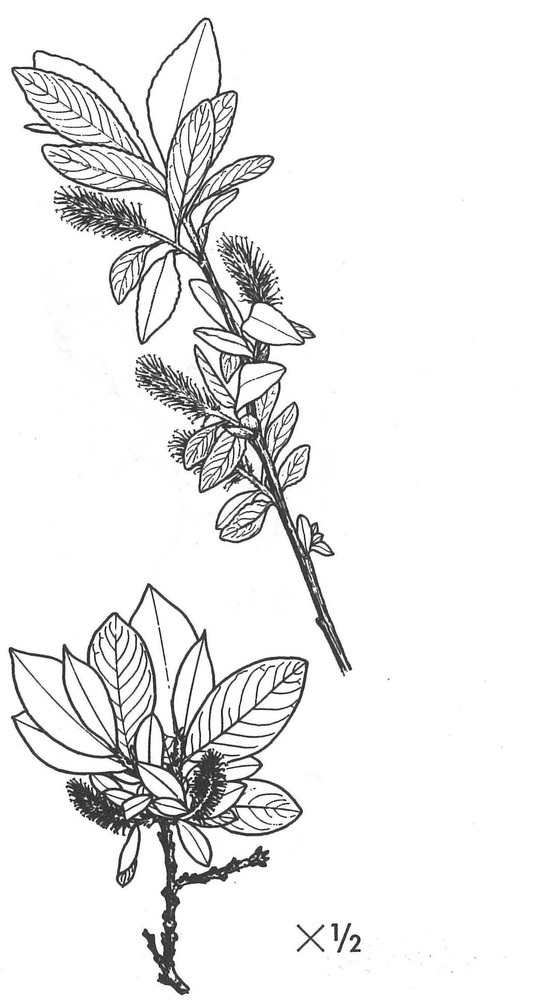| Salix barclayi Anderss. | |||
| |||
| Family | Salicaceae — APG family: Salicaceae | ||
| Description | Shrub up to 2-3 meters tall; young shoots tomentose; leaves blackened in drying, broad, ovate to obovate or elliptical, somewhat acute, crenate-serrate in the margin; catkins on leafy peduncles; capsules green when young, 4—4.5 mm long, pedicellat- ed, long-attenuate in apex, with style about 1-2 mm long; scales small, dark, ovate, acute, white-woolly. | ||
| Ecology | Forms thickets along the central and western parts of the southern Alaskan coast and in the interior Yukon. | ||
| Taxonomy notes | An extremely variable plant, doubtfully distinct from several other species, with which it apparently forms hybrids, its common identity resting on its having long, glabrous capsules, pubescent twigs, darkening leaves, and long styles. Hybridizes (probably introgrades) with S. pulchra (no. 48, below) and S. arctica subsp. crassijulis (no. 10, above) ; hybridizes also with S. glauca (no. 22 et seq.), S. myr- tillifolia (no. 34), and probably other species. The leaves are highly variable: as described above in the typical plant (var. rotundifolia Anderss., var. grandifolia Anderss.), but oblanceolate or ovate-lanceo- late in the commonly occurring var. angustifélia Anderss. |
This is a digital representation of Eric Hultén’s ‘Flora of Alaska and Neighboring Territories: A Manual of the Vascular Plants’, which was published by Stanford University Press in 1968. The book was digitized by C. Webb (at UAMN) as part of the Flora of Alaska project, with funding by the US NSF (Grant 1759964 to Ickert-Bond & Webb), and with permission of Stanford University Press. Data and images © 1968 Board of Trustees of the Leland Stanford Jr. Univ. Usage licence: Creative Commons BY-NC-SA 4.0. NB: You may find OCR errors; please refer to the hard-copy if in doubt.
